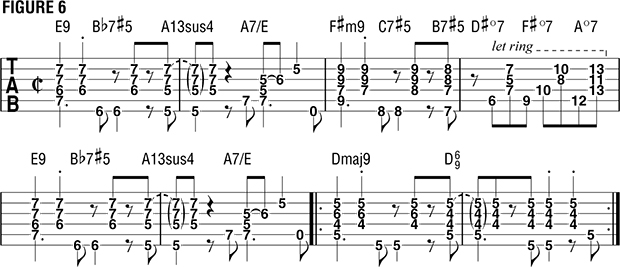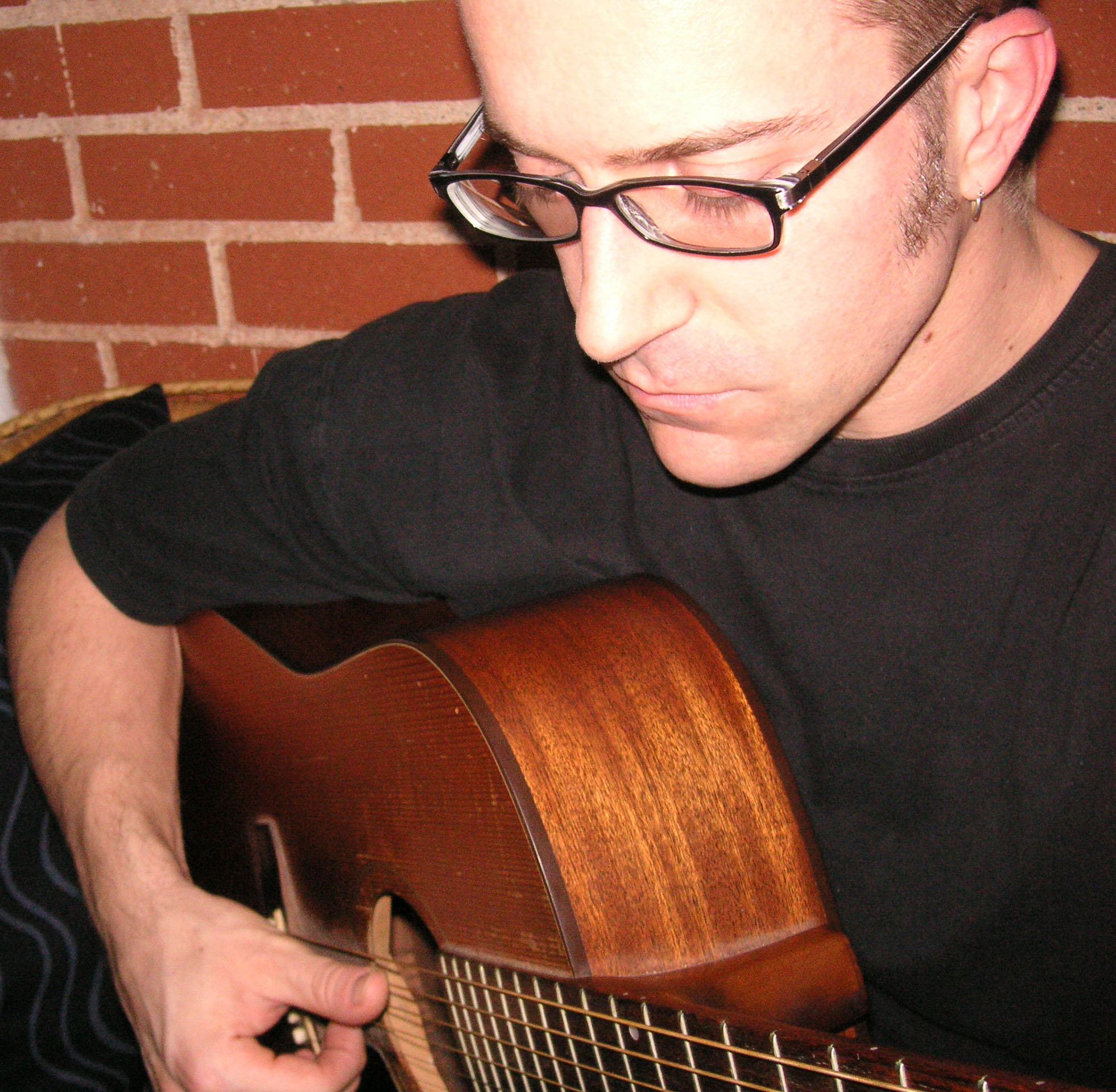Hole Notes: The Bossa Nova Rhythms of Antonio Carlos Jobim

In the late Fifties, Brazilian guitarist/pianist/vocalist Antonio Carlos Jobim took his fascination with jazz harmony and the guitar compositions of Heitor Villa-Lobos, combined it with influences as varied as composers like Debussy, Chopin, Ravel and Rachmaninoff, and helped give birth to a whole new style: bossa nova. (Translated from Portuguese, bossa nova means the “new way of doing” something.) This fresh-sounding, über-groovy, guitar-centric music (typically played on a nylon-string acoustic, accompanying a vocalist) required fluid fingerstyle chops, flawless time feel, a command of seventh and extended/altered chords—what’s known as “upper-structure harmony”—and the ability to improvise.
Regional players like João Gilberto and Luiz Bonfá, as well as American guitarist Charlie Byrd, were perfectly suited to the task. In fact, it was early records from these guitarists—many of which featured Jobim compositions (including “The Girl from Ipanema,” “No More Blues,” “Desafinado,” “Meditation” and “One Note Samba”)—that played a pivotal role in putting bossa nova on the international map. For this reason, it’s perhaps best to view this lesson as focusing on the songs created by Jobim (he’s more known as a composer than an instrumentalist), and the physical playing style perfected and popularized by Gilberto, Bonfá and Byrd. Let’s bust a bossa groove.

FIGURE 1 presents a Cmaj7–C6/9 change using the stereotypical bossa nova rhythm—a syncopated “chord-stab” pattern (eighth notes) plucked on higher strings, played over a root-fifth alternating bass line (half notes). Consider perfecting the upper-register chord rhythm before adding the bass notes. FIGURE 2 illustrates a variation.

Meanwhile, in FIGURES 3–4, the previous “chord-stab” patterns are restated but feature a more rhythmically active bass line—an extra “thumbed” bass note in anticipation of beats “one” and “two.”
Countless jazz standards revolve around a chord sequence referred to as a “ii-V-I progression,” and Jobim’s tunes are no exception. Further, Jobim classics like “Wave,” “How Insensitive,” “Dindi” and others feature jazzy extended chords (shapes larger than sevenths—like ninths, 11ths and 13ths) spiced up with suspensions (“sus4”) and other tones.

To aid you in such settings, FIGURE 5 takes a iim7–V7–Imaj7 progression in C—Dm7–G7–Cmaj7—and colors its chords to create Dm9, Dm6/9, G13sus4 and G13 sounds, played in a rhythm pattern not unlike FIGURE 3.

We’ll close out this lesson with FIGURE 6, an interpretation of the E7–A7–Fsm7–B7 ending vamp in “No More Blues,” ripe with extended, altered (augmented dominant) and substitute (diminished seventh, etc.) chords. In addition, melodic fills (bar 2) and chord fills (bar 4) help break up our famiiar groove (a hybrid of FIGURE 3). If you opt to develop your own interpretations of the Jobim standards cited herein, be sure to listen to the authentic bossa nova players—like Gilberto, Bonfá and Byrd—to get a sense for how fills and rhythmic variations can inject liveliness into a progression, a stark contrast to the comparatively boring pursuit (a phenomenon all too common in non-Brazilian hands) of plucking the exact same rhythm throughout a bossa nova.
All the latest guitar news, interviews, lessons, reviews, deals and more, direct to your inbox!
Part 1
Lesson Contents
• Part 1
• Part 2
• Part 3
The following content is related to the June 2012 issue of
Guitar World
. For the full range of interviews, features, tabs and more, pick up the new issue on newsstands now, or in our online store.
In the late fifties, Brazilian guitarist/pianist/vocalist Antonio Carlos Jobim took his fascination with jazz harmony and the guitar compositions of Heitor Villa-Lobos, combined it with influences as varied as composers like Debussy, Chopin, Ravel and Rachmaninoff, and helped give birth to a whole new style: bossa nova.
Part 2
Lesson Contents
• Part 1
• Part 2
• Part 3
The following content is related to the June 2012 issue of
Guitar World
. For the full range of interviews, features, tabs and more, pick up the new issue on newsstands now, or in our online store.
In the late fifties, Brazilian guitarist/pianist/vocalist Antonio Carlos Jobim took his fascination with jazz harmony and the guitar compositions of Heitor Villa-Lobos, combined it with influences as varied as composers like Debussy, Chopin, Ravel and Rachmaninoff, and helped give birth to a whole new style: bossa nova.
Part 3
A singer-songwriter/multi-instrumentalist/film composer, Musician's Institute instructor, and author of 50+ transcription/instructional books, Dale Turner is also Guitar World's "Hole Notes"/"Acoustic Nation" columnist, and the former West Coast Editor of Guitar One magazine. Some of Dale’s old, weird, rare, and/or exotic instruments are featured in his score for WEEDS, the first animated short completed within the Filmmakers Co-op at Disney Feature Animation. His most recent CD, Mannerisms Magnified, was praised by Guitar Player magazine for its "Smart pop tunes that are crammed with interesting guitar parts and tones ... Like what the Beach Boys might do if they were on an acid trip that was on the verge of getting out of control. Yeah!"

